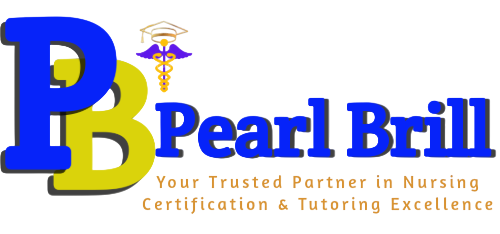Nursing Assignment Help and Essay Writing Samples - Evaluating the Importance and Barriers of EBP in BSN-Prepared RN Practice
Nursing Assignment Help and Essays Samples
Evaluating the Importance and Barriers of EBP in BSN-Prepared RN Practice
Learning Outcomes
- Evaluating the Importance of EBP to the Practice of BSN-Prepared RN
- Ways of Integrating Evidence into Practice
- Obstacles and Barriers to Implementing EBPs.
Evaluating the Importance and Barriers of EBP in BSN-Prepared RN Practice
Evidence-based practice (EBP) is central for a Bachelor of Science Nursing (BSN) Registered Nurse (RN) since it offers the technical expertise, knowledge, and insights in decision-making and development and implementation of a care plan. According to Horntvedt et al. (2018), EBP in nursing involves integrating clinical knowledge, data from research, and personal inclinations in improving patient-centered care. It is central in promoting the quality and safety of patient outcome. In the case of a BSN trained registered nurse, EBPs on interventions and care strategies enable the healthcare provider to devise a broad approach corresponding to the patient’s healthcare requirements and individual preferences, including culture, beliefs, and values.
Developing patient-centered objectives and involvement in continuous learning are two core techniques of incorporating evidence into the healthcare practice. Learning centered on an individual’s area of interest aids in acquiring expertise about the contemporary trends, for example, importance and application of technology in formulating and implementing care plans. An example is the use of bedside alarms, and hourly rounding in managing patient falls. Organizations can enforce continuous learning by providing staff with adequate knowledge through training packages and opportunities (Farokhzadian and Poorchangizi, 2017). Similarly, constant learning promotes EBPs since RNs gain sufficient knowledge to provide patient-centered care. Creating efficient approaches that are aligned with the individual’s preferences is one way to achieve patient-centered care. For example, when health facilities need to reduce the duration of hospitalisation, the Registered Nurse is tasked with identifying and formulating EBPs that assist in attaining the objective. An example is the combination of pharmacological and non-pharmacological intervention.
Three impediments that might hamper the incorporation of EBPs into training include scarce resources and time to learn, inadequate organizational support and lack of collaborative practice. Collaborative practice is significant in the integration of EBPs in healthcare. Additionally, organizations need to offer resources and time, which are necessary for integrating EBPs into training. Lack of such assistance may deter the success of the EBP’s goals. The setbacks mentioned above can be tackled by organizations providing adequate resources to finance continuous education, developing a collaborative culture between various healthcare stakeholders, and petitioning for the managerial backing to execute the EBPs. To prevent challenges like personnel resistance in the EBPs implementation, using change management strategies is important.
References
Farokhzadian, J., & Poorchangizi, B. (2017). 115: Strategies of integration of evidence-based practice in the clinical settings. BMJ open, 7 (Suppl 1).
Horntvedt, M. E. T., Nordsteien, A., Fermann, T., & Severinsson, E. (2018). Strategies for teaching evidence-based practice in nursing education: a thematic literature review. BMC medical education, 18(1), 172.
Barriers to Implementing Evidence-Based Practices (EBPs) and Developing a PICOT Question
Introduction
Two core elements in healthcare are quality and safety. These are achieved through conducting vast research and developing effective management strategies for a healthcare condition. Nurses must show competence in using the research insights to address healthcare issues. However, several barriers impair the development and implementation of an EBP in nursing.
Barriers to EBP Implementation
The primary challenges in implementing EBP are the low acceptance of the new approach by the healthcare providers, high cost of implementation, time issues, and limited support from the organizational management. As espoused by Majid et al. (2011), these barriers are the limitations to the pace in implementing the EBPs. Also, there are barriers to change, reflected in fear of losing jobs and poor collaboration between nurses and physicians.
Overcoming the Barriers
Addressing the barriers to EBP implementation is achieved through developing a profound plan. It is also important for healthcare providers to use change management strategies, including Lewin and Kotter. These are central in ensuring a structured process in implementing the EBPs and addressing the possible resistance to change. Further, the organization must adopt a culture of implementing EBP. The time barrier issue is addressed through adequate planning and consideration of all the risk and impeding factors.
Developing a PICOT Question
The PICOT question that follows involves obesity management. Notably, there are several management strategies for obesity and overweight. These include pharmacological and non-pharmacological. The PICOT question therefore reads; For patients aged 18-25 with obesity (P), how does bariatric surgery (I) compare with lifestyle modification, including diet and exercises (C) in reducing weight and healthcare complications (O) within six months (T). This PICOT question compares two interventions in managing obesity and overweight. These are surgery and lifestyle modification.
References
Majid, S., Foo, S., Luyt, B., Zhang, X., Theng, Y. L., Chang, Y. K., & Mokhtar, I. A. (2011). Adopting evidence-based practice in clinical decision making: nurses' perceptions, knowledge, and barriers. Journal of the Medical Library Association: JMLA, 99(3), 229.
For a Full Paper as a Sample or a unique, high-quality, and customised paper or assignment done by a professional writer, kindly reach through:
Email: pearlbrill.pb@gmail.com
WhatsApp: +1 689 247-7728
Nursing Assignment Sample: Role of Leadership and Management in Intervention Care Plan for Bariatric Surgery Pediatric Patients

Contact us
Your Trusted Partner in Nursing Certification & Tutoring Excellence
- Phone: +1 689 2477728
- Email: pealbrill.pb@gmail.com
